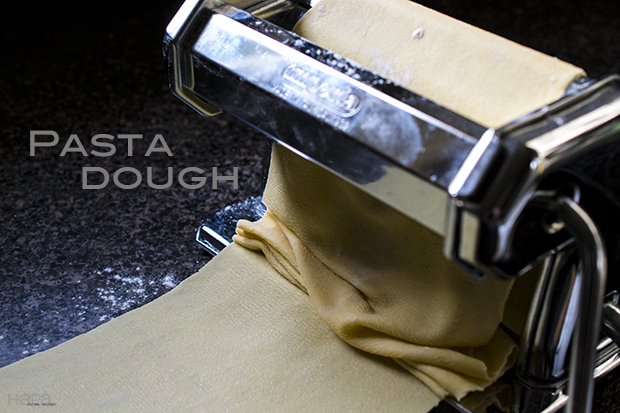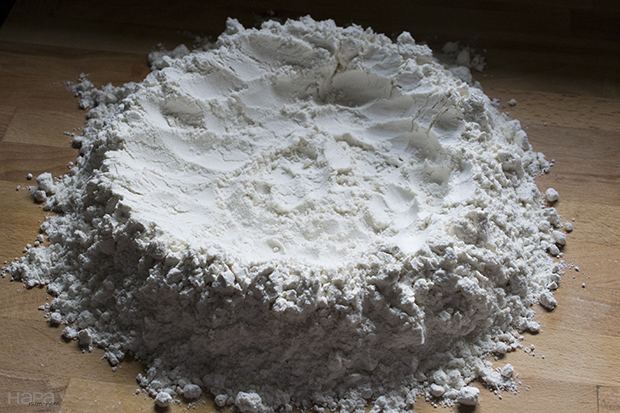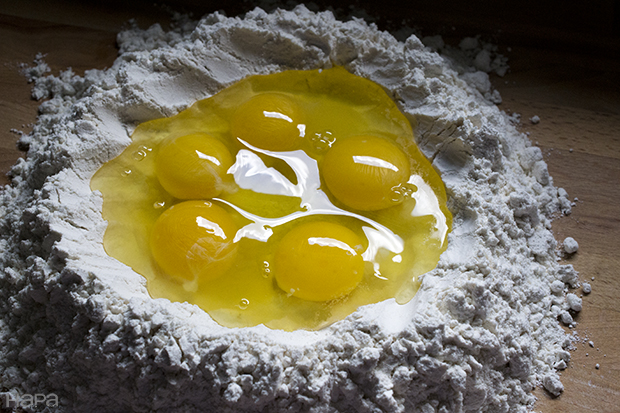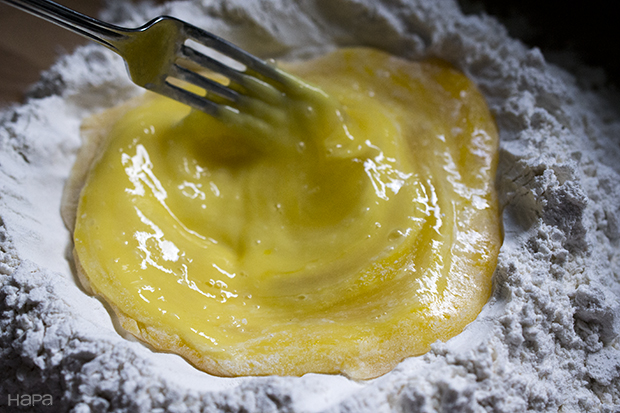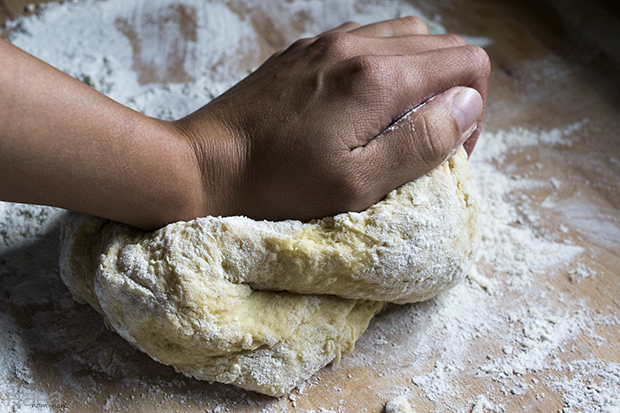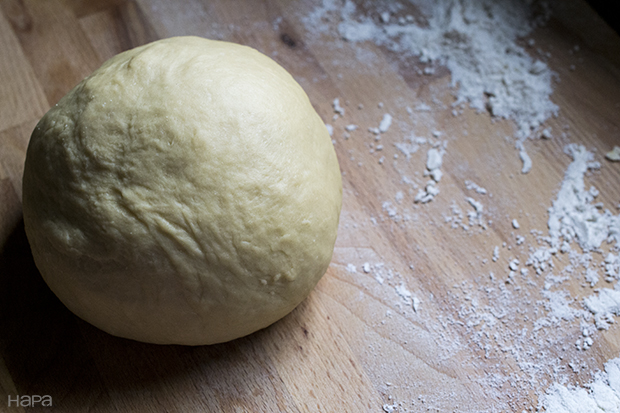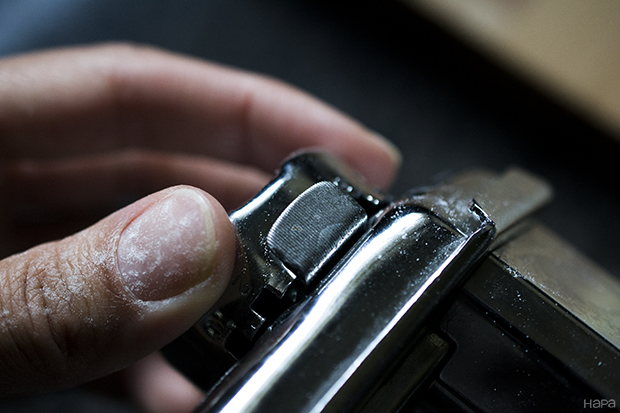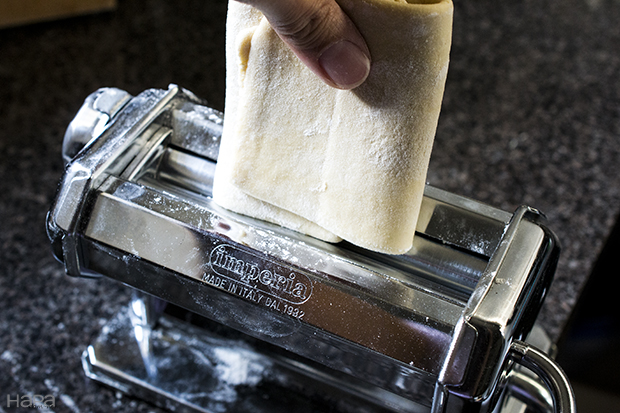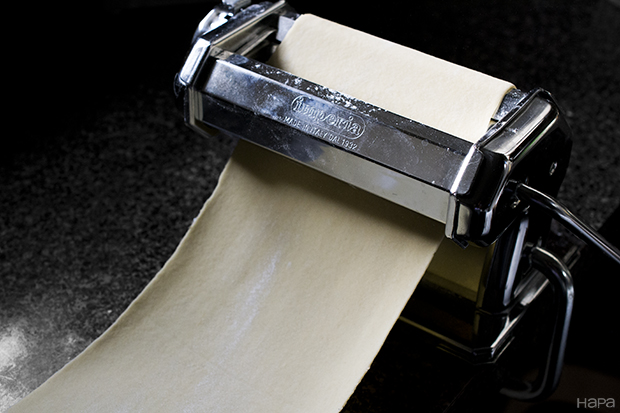Homemade pasta is all about the dough. Well duh…you may be thinking. Obvious statement aside, truly good pasta dough will make all the difference in the world between the madness you will feel when you haven’t worked your dough correctly versus and the pure pleasure you will feel when you crank out sheet after sheet of paper thin (yet architecturally strong) pasta.
Some tips you’ll want to follow:
- Knead your dough – work it for at least 10 minutes to develop the gluten in the flour (Italian grandmothers don’t have arms like Popeye for nothing). You will want to work the dough until it is smooth and elastic, think of the idiom, ‘soft as a baby’s bottom’.
- Do not let your dough dry out – cover it with plastic wrap once you are done kneading. If you are working with one piece of dough, be sure to keep the other pieces wrapped.
- Let the dough rest for 30 minutes so the gluten can relax.
Form a Well in the Flour:
Add the Eggs:
Beat the Eggs, Slowing Adding Flour:
Knead the Dough for Approximately 10 Minutes:
Cover the Dough with Plastic Wrap and Let Sit for 30 Minutes:
How to Rollout Dough in Preparation for Different Types of Pasta
- Unwrap the dough. Using a bench scraper or knife, quarter the ball of dough. Working with one section at a time, wrap the wedges not in use to prevent the dough from drying out.
- On a lightly floured surface, flatten out the section of dough you are working with, about half an inch. Shape into a rectangle.
- Starting with the widest setting of your pasta machine, insert the narrowest end of the dough and roll the dough all the way through. Fold the dough into thirds, much like folding a letter. Lightly flour and again, working from the narrowest side of the dough, roll the dough back through the pasta machine. Again, fold the dough into thirds, flour, and roll through for a 3rd time.
- Set the rollers down to the next tightest setting and pass the lightly floured dough through, catching it about half way through on the other side and guiding the dough out of the rollers. If your dough started shredding, use a little more flour.
Continue this process, cranking down the width of the rollers with each pass until you are at the lowest setting. Be sure that your work space is floured, so the dough does not stick.
How to Make Ravioli
- Using your bench scraper or the back of a knife, very gently indent the middle of the sheet of dough along the horizontal axis. Pipe or carefully spoon a teaspoon of the filling onto the lower half of the dough.
- Using a brush or your finger, apply the egg wash to the edges of the dough and in-between the filling. Carefully fold the top half of the dough over to cover the filling (I find it’s easier to do this step if you have cut the dough after every third teaspoon of filling – refer to the below photographs).
- Running your fingers around the top of the ravioli, down to the sides, and then to the bottom, push out all the air and firmly seal the edges. Air bubbles in your ravioli will cause them to explode when you add them to the boiling water.
- In a large pot, bring 6 quarts of water to a boil with 2 tablespoons of salt and a tablespoon of olive oil. Lower the heat to produce a simmer. Working in batches, add the ravioli to the boiling water (no more than 10 at a time) and cook for 2 minutes or until they float.
How to Make Fettuccine
- Cut each pasta sheet into 10-inch lengths. Sprinkle the sheet lightly with flour and roll it up. Cut into 1/4-inch strips, unroll.
- In a large pot, bring 6 quarts of water to a boil with 2 tablespoons of salt. Working in batches, add the pasta and cook for 2 minutes.
Start by Setting the Rollers to Their Widest Setting:
Flatten Out the Piece of Dough and Pass Through the Pasta Machine:
Fold the Dough into Thirds and Run Through the Pasta Machine, Do This Two More Times:
Continue to Dial Down the Settings Until You Are at the Smallest Setting:
If you are unfamiliar with using a hand-cranked pasta machine, I suggest watching the tutorial posted by Fine Cooking.
- 3½ to 4 cups all-purpose flour
- 5 large eggs
- ½ tsp extra-virgin olive oil
- 1½ tsp salt
- Mound 3 cups of flour on a clean counter or cutting board. Make a large well in the middle of the flour and add the eggs, olive oil, and salt. Using a fork, beat the eggs. Using your finger tips begin to incorporate the flour a little bit at a time, pulling flour from the rim of the well into the egg mixture.
- As the well grows outward due to adding more flour to the center, keep pushing up flour from the base to maintain the shape of the well. The dough will come together with approximately half of the flour used. Start kneading the dough, pushing with the palm of your hands, rolling the dough back onto itself, and then pushing with your palms again, adding flour as needed. Repeat this process until the dough is smooth and elastic – about ten minutes.
- Form the dough into a ball and wrap with plastic wrap. Allow the dough to rest for 30 minutes at room temperature.
